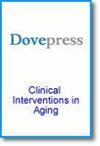早期心脏康复可改善心肌梗死患者颈动脉的僵硬程度
IF 3.7
3区 医学
引用次数: 0
摘要
背景:人们对心脏康复(CR)对心肌梗死(MI)患者颈动脉僵硬度(CAS)的影响知之甚少:康复组(B)包括90名接受心脏康复治疗的心肌梗死患者,对照组(K)包括30名未参加心脏康复治疗的心肌梗死患者,健康组包括38名无心血管危险因素的患者。CAS在CR前后通过回声跟踪进行测定:基线时,心肌梗死患者(B+K)的 CAS 参数平均值明显高于健康人:β-刚度指数(7.1 vs 6.4,p = 0.004)、彼得森弹性模量(96 kPa vs 77 kPa,p < 0.001)和脉搏波速度-β(6.1 m/s vs 5.2 m/s,p < 0.001)。年龄(β:r = 0.242,p = 0.008;EP:r = 0.250,p = 0.006;PWV-β:r = 0.224,p = 0.014)和血压:SBP(EP:r = 0.388,PWV-β:r = 0.360)、DBP(AC:r = 0.225)和 PP(PWV-β:r = 0.221)与 CAS 的初始参数呈正相关。β-僵化指数(Rho=- 0.26,P=0.04)和脉搏波速度-β(Rho=0.29,P=0.03)与以 METs 表示的峰值运动能力成反比。CR 后,B 组的β-僵硬度指数(6.2 vs 7.1,p = 0.016)、EP(78 kPa vs 101 kPa,p = 0.001)和脉搏波速度-β(5.4 m/s vs 6.2 m/s,p = 0.001)的平均值显著低于 K 组。单变量分析显示,基线收缩压为 120 mm Hg(OR = 2.74,p = 0.009)和左室射血分数为 43% (OR = 5.05,p = 0.005)的患者 CR 后 CAS 改善的可能性明显更高:结论:在心肌梗死患者中,CR对CAS参数产生了有益的影响。结论:在心肌梗死患者中,CR对CAS参数产生了有益的影响,基线时较低的SBP和LVEF预示着CAS的改善。本文章由计算机程序翻译,如有差异,请以英文原文为准。
Early Cardiac Rehabilitation Improves Carotid Arterial Stiffness in Patients with Myocardial Infarction
Background: Little is known about the effect of cardiac rehabilitation (CR) on carotid arterial stiffness (CAS) in patients with myocardial infarction (MI).
Patients and Methods: Rehabilitation group (B) included 90 patients with MI subjected to CR, control group (K) consisted of 30 patients with MI not participating in CR, and healthy group comprised 38 persons without cardiovascular risk factors. CAS was determined using echo-tracking before and after CR.
Results: At baseline, patients with MI (B+K) presented with significantly higher mean values of CAS parameters: beta-stiffness index (7.1 vs 6.4, p = 0.004), Peterson’s elastic modulus (96 kPa vs 77 kPa, p < 0.001) and PWV-beta (6.1 m/s vs 5.2 m/s, p < 0.001) than healthy persons. Age (beta: r = 0.242, p = 0.008; EP: r = 0.250, p = 0.006; PWV-beta: r = 0.224, p = 0.014) and blood pressure: SBP (EP: r = 0.388, PWV-beta: r = 0.360), DBP (AC: r = 0.225) and PP (PWV-beta: r = 0.221) correlated positively with the initial parameters of CAS. Beta-stiffness index (Rho=− 0.26, p = 0.04) and PWV-beta (Rho = 0.29, p = 0.03) correlated inversely with peak exercise capacity expressed in METs. After CR, mean values of beta-stiffness index (6.2 vs 7.1, p = 0.016), EP (78 kPa vs 101 kPa, p = 0.001) and PWV-beta (5.4 m/s vs 6.2 m/s, p = 0.001) in group B were significantly lower than in group K. In group B, CAS parameters decreased significantly after CR. Univariate analysis demonstrated that the likelihood of an improvement in CAS after CR was significantly higher in patients with baseline systolic blood pressure < 120 mm Hg (OR = 2.74, p = 0.009) and left ventricular ejection fraction < 43% (OR = 5.05, p = 0.005).
Conclusion: In patients with MI, CR exerted a beneficial effect on CAS parameters. The improvement in CAS was predicted by lower SBP and LVEF at baseline.
Patients and Methods: Rehabilitation group (B) included 90 patients with MI subjected to CR, control group (K) consisted of 30 patients with MI not participating in CR, and healthy group comprised 38 persons without cardiovascular risk factors. CAS was determined using echo-tracking before and after CR.
Results: At baseline, patients with MI (B+K) presented with significantly higher mean values of CAS parameters: beta-stiffness index (7.1 vs 6.4, p = 0.004), Peterson’s elastic modulus (96 kPa vs 77 kPa, p < 0.001) and PWV-beta (6.1 m/s vs 5.2 m/s, p < 0.001) than healthy persons. Age (beta: r = 0.242, p = 0.008; EP: r = 0.250, p = 0.006; PWV-beta: r = 0.224, p = 0.014) and blood pressure: SBP (EP: r = 0.388, PWV-beta: r = 0.360), DBP (AC: r = 0.225) and PP (PWV-beta: r = 0.221) correlated positively with the initial parameters of CAS. Beta-stiffness index (Rho=− 0.26, p = 0.04) and PWV-beta (Rho = 0.29, p = 0.03) correlated inversely with peak exercise capacity expressed in METs. After CR, mean values of beta-stiffness index (6.2 vs 7.1, p = 0.016), EP (78 kPa vs 101 kPa, p = 0.001) and PWV-beta (5.4 m/s vs 6.2 m/s, p = 0.001) in group B were significantly lower than in group K. In group B, CAS parameters decreased significantly after CR. Univariate analysis demonstrated that the likelihood of an improvement in CAS after CR was significantly higher in patients with baseline systolic blood pressure < 120 mm Hg (OR = 2.74, p = 0.009) and left ventricular ejection fraction < 43% (OR = 5.05, p = 0.005).
Conclusion: In patients with MI, CR exerted a beneficial effect on CAS parameters. The improvement in CAS was predicted by lower SBP and LVEF at baseline.
求助全文
通过发布文献求助,成功后即可免费获取论文全文。
去求助
来源期刊

Clinical Interventions in Aging
GERIATRICS & GERONTOLOGY-
CiteScore
6.20
自引率
2.80%
发文量
193
期刊介绍:
Clinical Interventions in Aging, is an online, peer reviewed, open access journal focusing on concise rapid reporting of original research and reviews in aging. Special attention will be given to papers reporting on actual or potential clinical applications leading to improved prevention or treatment of disease or a greater understanding of pathological processes that result from maladaptive changes in the body associated with aging. This journal is directed at a wide array of scientists, engineers, pharmacists, pharmacologists and clinical specialists wishing to maintain an up to date knowledge of this exciting and emerging field.
 求助内容:
求助内容: 应助结果提醒方式:
应助结果提醒方式:


